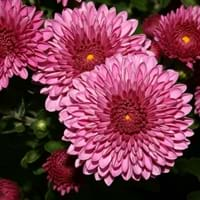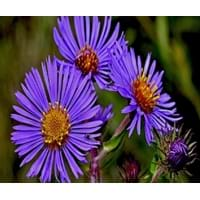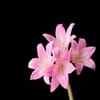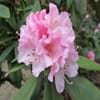Color
Orange, Pink, Purple, Red, White, Yellow
Pink, Purple, Red, White
Color Meaning
Orange - Satisfaction and Passion, Pink - Sensitivity and Love, Purple - Elegance and Pride, Red - Courage, Desire and Love, White - Purity and Innocence, Yellow - Happiness and Friendship
Pink - Sensitivity and Love, Purple - Elegance and Pride, Red - Courage, Desire and Love, White - Purity and Innocence
Line
Not Available
Not Available
Silhouette
Not Available
Not Available
Blossom Texture
Not Available
Not Available
Form
Not Available
Not Available
Sunlight
Full Sun
Full Sun, Part Sun
Watering
Diligently
Enough
Essential Fertilizers
Lime stone, Sulphur
Phosphorus
Common Pests and Diseases
List of Pests
Unknown, Unknown, Unknown
Aphids, Nematodes, Slugs
List of Diseases
Unknown
Powdery Mildew, Rust
Bloom Time
Early Summer Season
All Summer Season, Fall Season
Interesting Facts of
- The Rose comes in various colors, although a "black rose " is not literally black but a dark red.
- A single rose suggests utmost devotion while two rose entwined together says "Marry me".
- The name Aster comes from Greek word Aster which means 'Star'.
- The flower looks like a single flower, but it is actually a cluster of about 300 small yellow disk flowers surrounded by colorful petals.
Lifespan
Annuals - complete its full life cycle in one growing season
Perennials - a plant that lives for three or more years
Uses
Not Available
Not Available
Health Benefits
Unknown, Unknown, Unknown, Unknown, Unknown, Unknown
Best remedy for Cough & Cold, Regulates the Menstruation cycle, Used for sinus pain, hay fever and headache
Medicinal Uses
Unknown, Unknown
Acts as a antispasmodic, Acts as an anti-inflammatory
Culinary Uses
Unknown, Unknown, Unknown, Unknown, Unknown, Unknown
Used in salads, soups and sandwiches
Cosmetic Uses
Best for Healing, Unknown, Unknown, Unknown, Used after facial and cleansing, Unknown, Unknown, Unknown
Best for Healing, Used in Perfumes
Occasional Uses
Father's Day, Funerals, Sympathy
Wedding
Scientific Name
Dendranthema grandiflorum
Symphyotrichum novae-angliae
Sub kingdom
Tracheobionta
Tracheobionta
Super Division
Spermatophyte
Spermatophyte
Division
Magnoliophyta
Magnoliophyta
Order
Asterales
Asterales
Class
Magnoliopsida
Magnoliopsida
Family
Asteraceae
Asteraceae
Sub Family
Asteroideae
Asteroideae
Genus
Not Available
Not Available
Number of Species
Not Available
Not Available
More about Chrysanthemums and Aster Facts and color
You must be curious to know more about Chrysanthemums and Aster facts and color. flowers.comparespecies.com will let you know all the Interesting Facts about Chrysanthemums and Aster. Chrysanthemums comes in Orange, Pink, Purple, Red, White, Yellow colors whereas Aster flowers are with Pink, Purple, Red, White colors. Other Chrysanthemums and Aster facts will definitely amuse you.
Chrysanthemums and Aster growing conditions
Absolute growing condition is the only key to keep plants in good health and in good shape. Let’s learn about essential Chrysanthemums and Aster growing conditions. Chrysanthemums requires Full Sun and Diligently watering with 6.00 of Loamy soil. Aster needs Full Sun, Part Sun and Enough watering with 6.00 of Loamy soil. Get other Chrysanthemums and Aster facts in the sections below.
Chrysanthemums and Aster Facts
Want to know about Chrysanthemums and Aster facts? Get all the Chrysanthemums and Aster facts here.
Chrysanthemums and Aster Classification
After knowing about various Chrysanthemums and Aster facts, let's study their classification. Based on genetic and physical features, Chrysanthemums and Aster classification starts with knowing their scientific name. The scientific name of Chrysanthemums and Aster is Dendranthema grandiflorum and Symphyotrichum novae-angliae respectively. Chrysanthemums belongs to Asteraceae family whereas Aster falls under Asteraceae family. Also check out Flowers by Color so as to plant colorful aroma in the garden.





